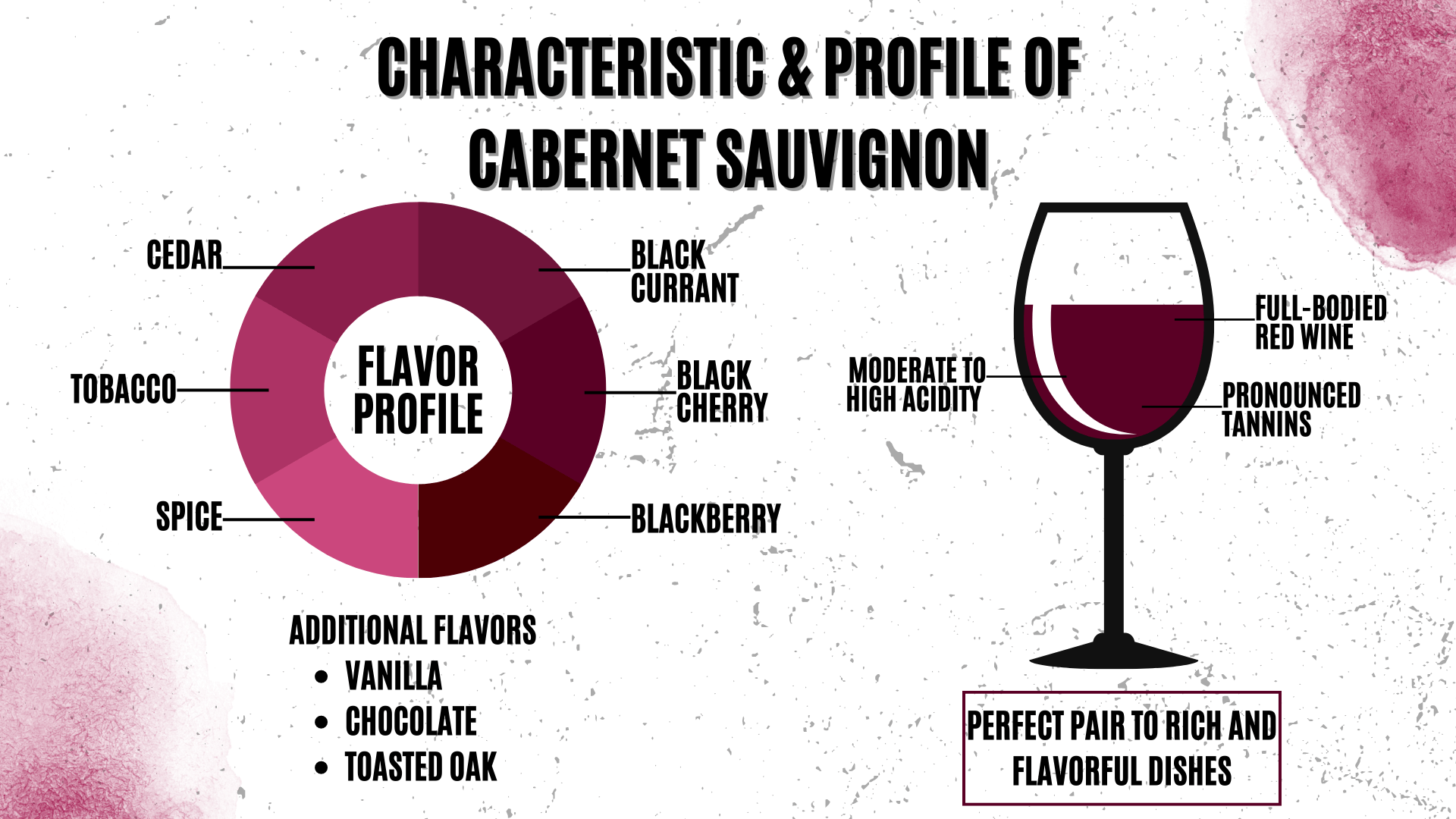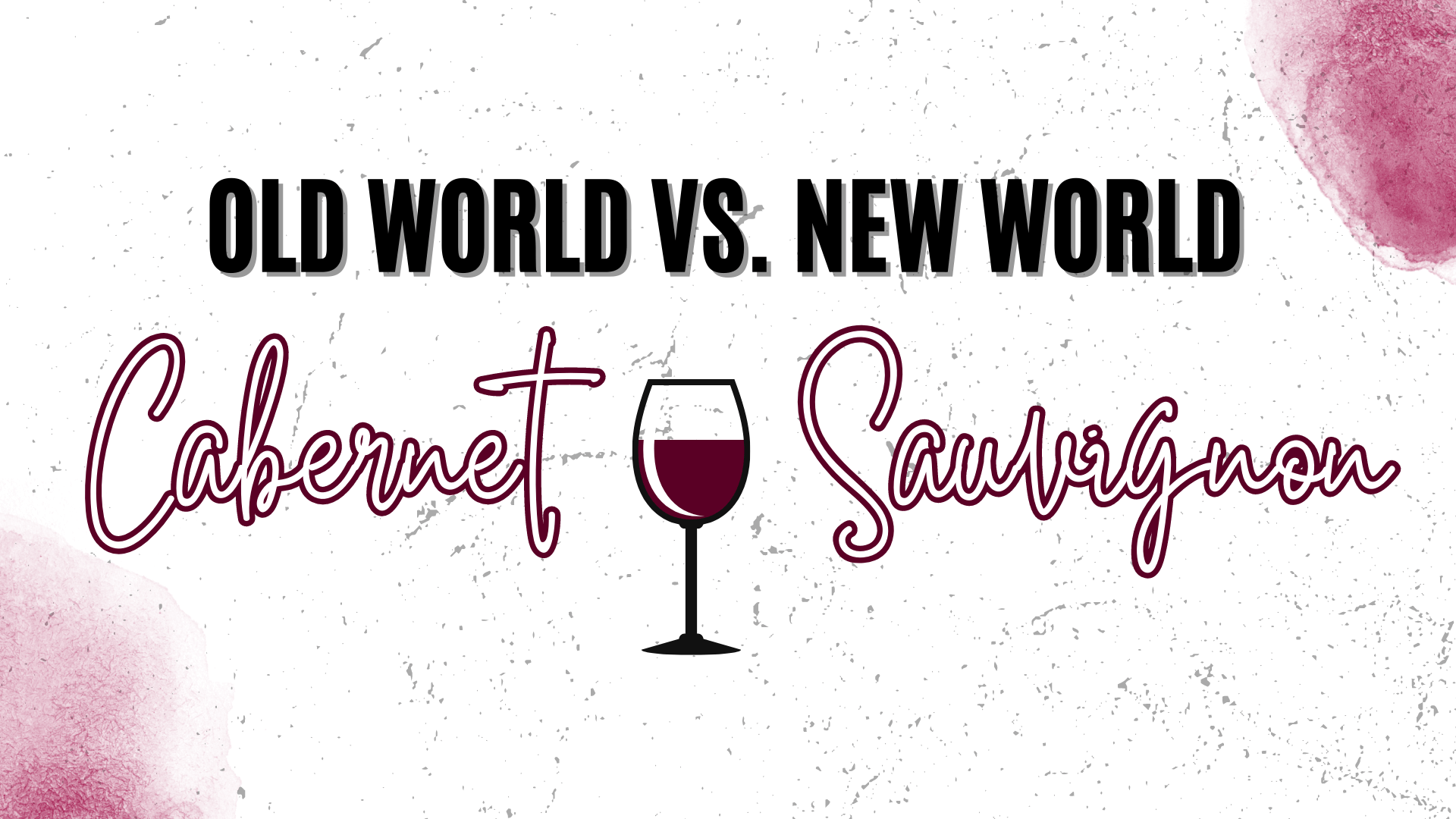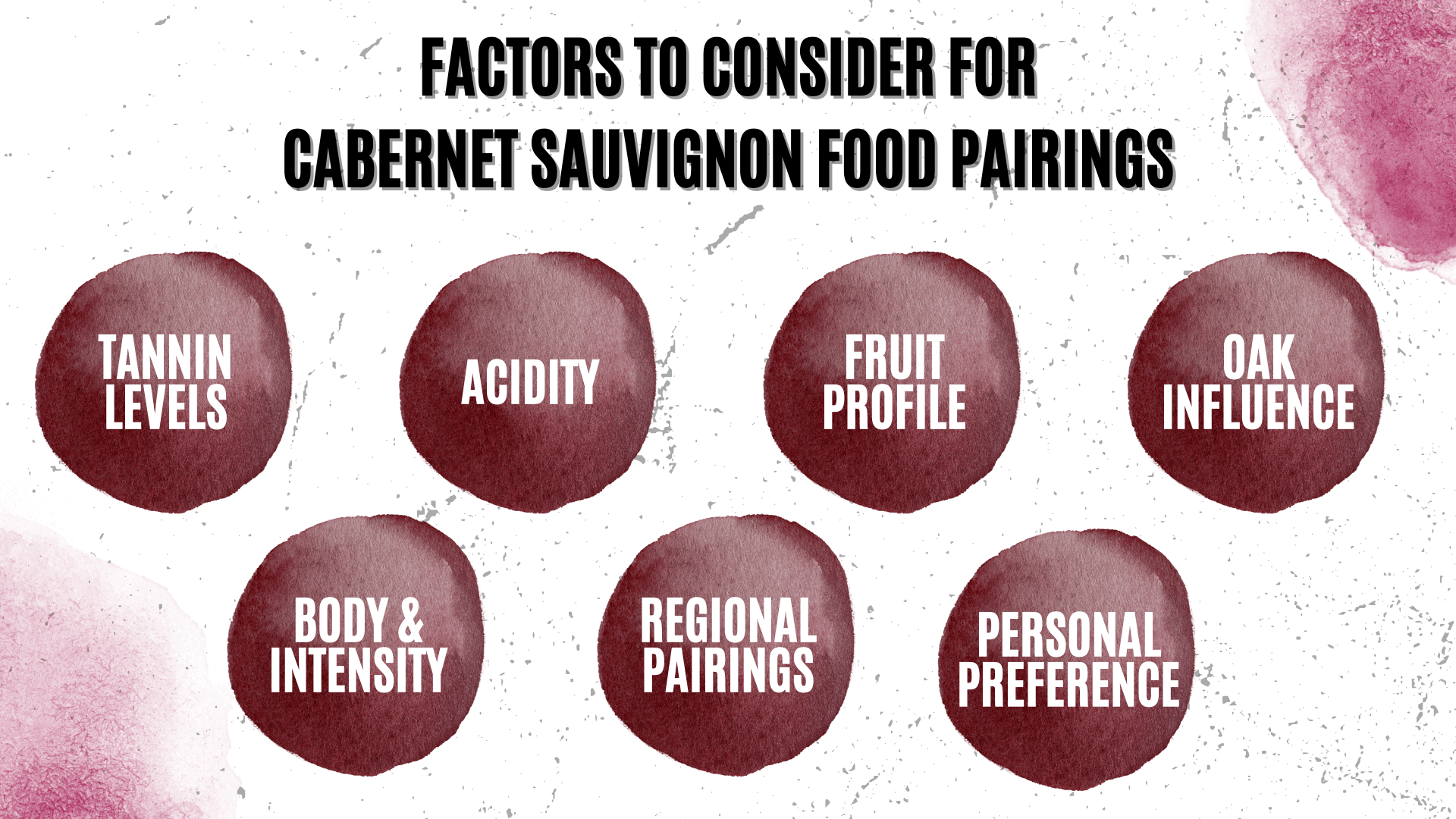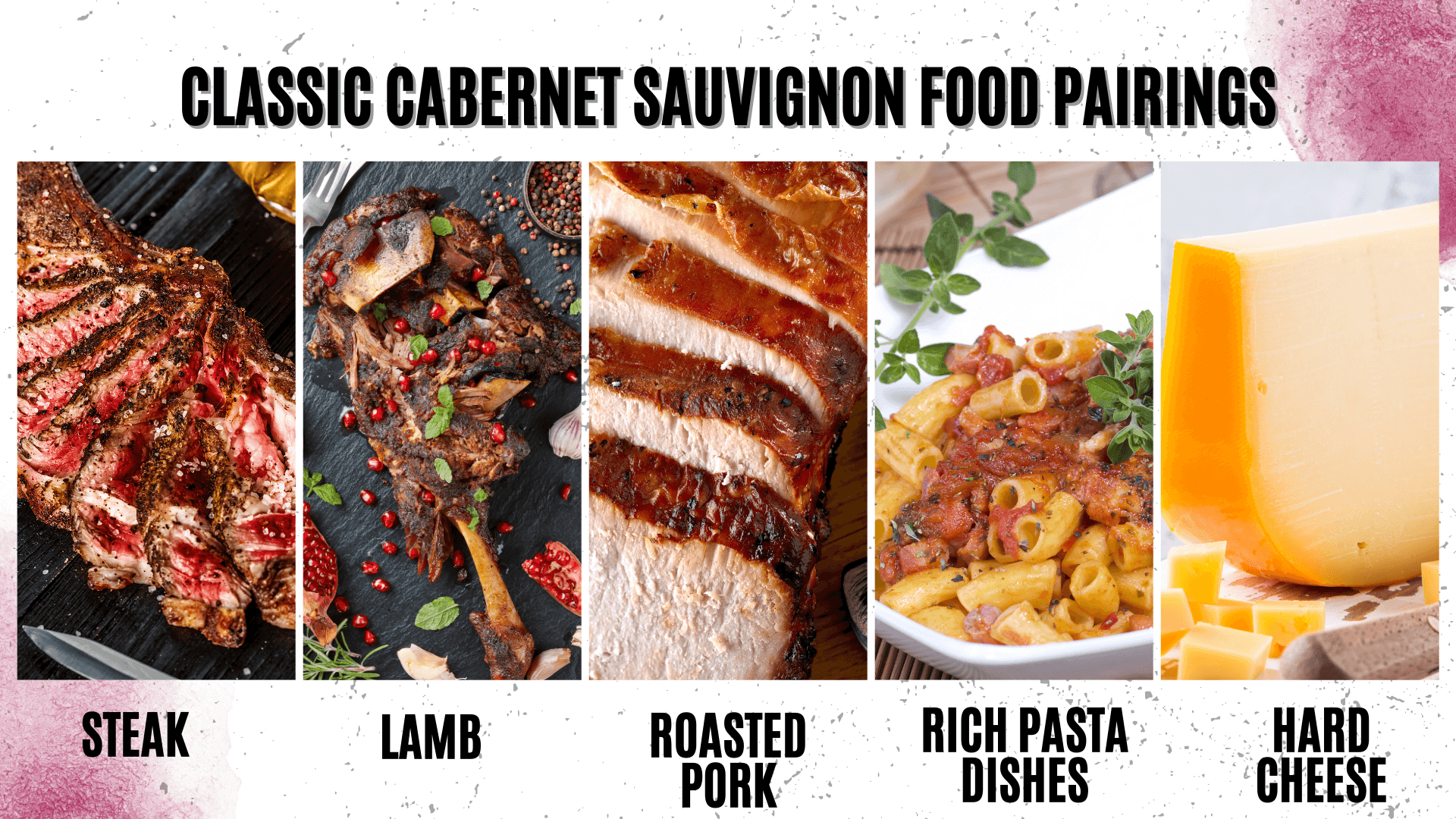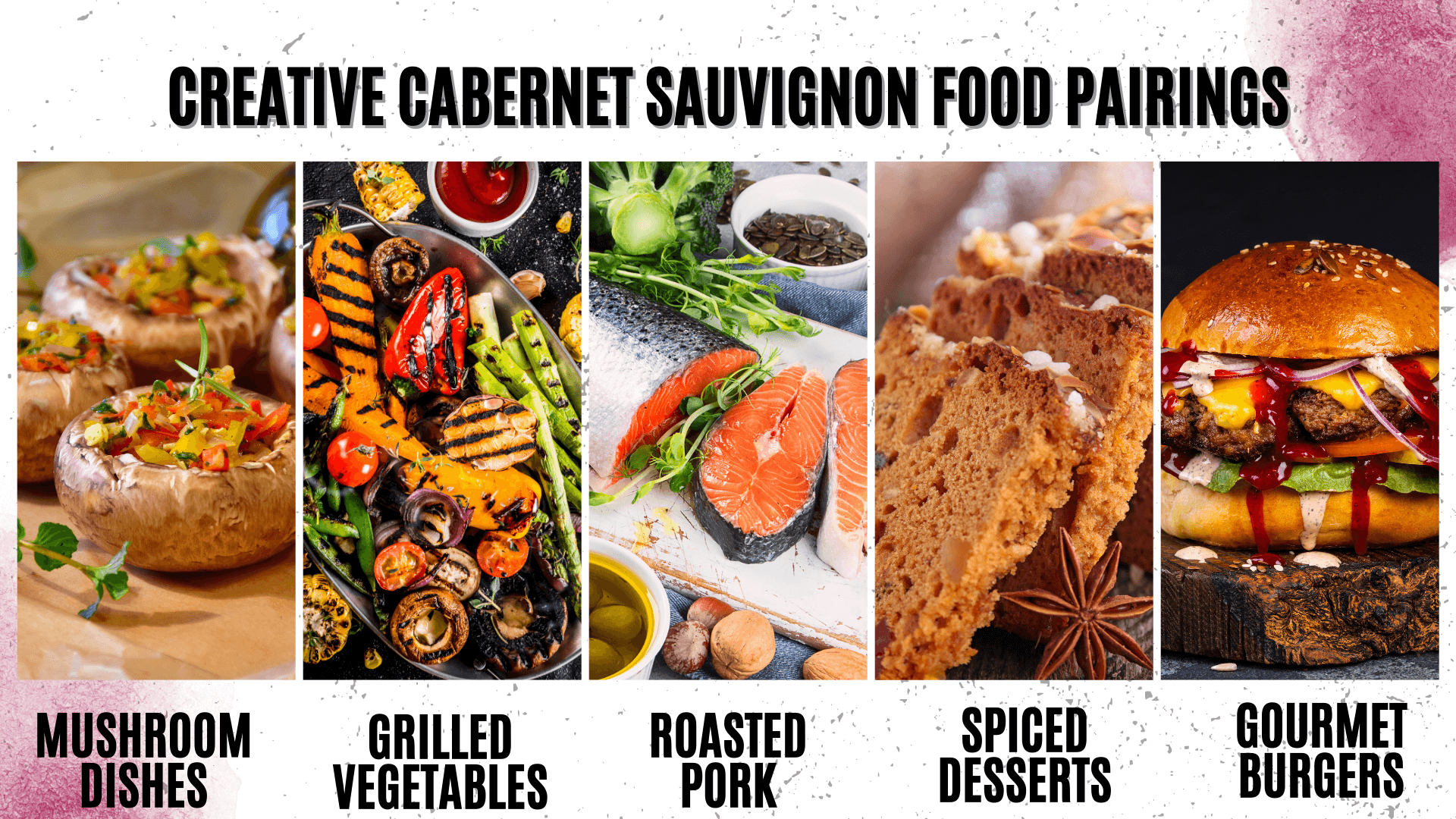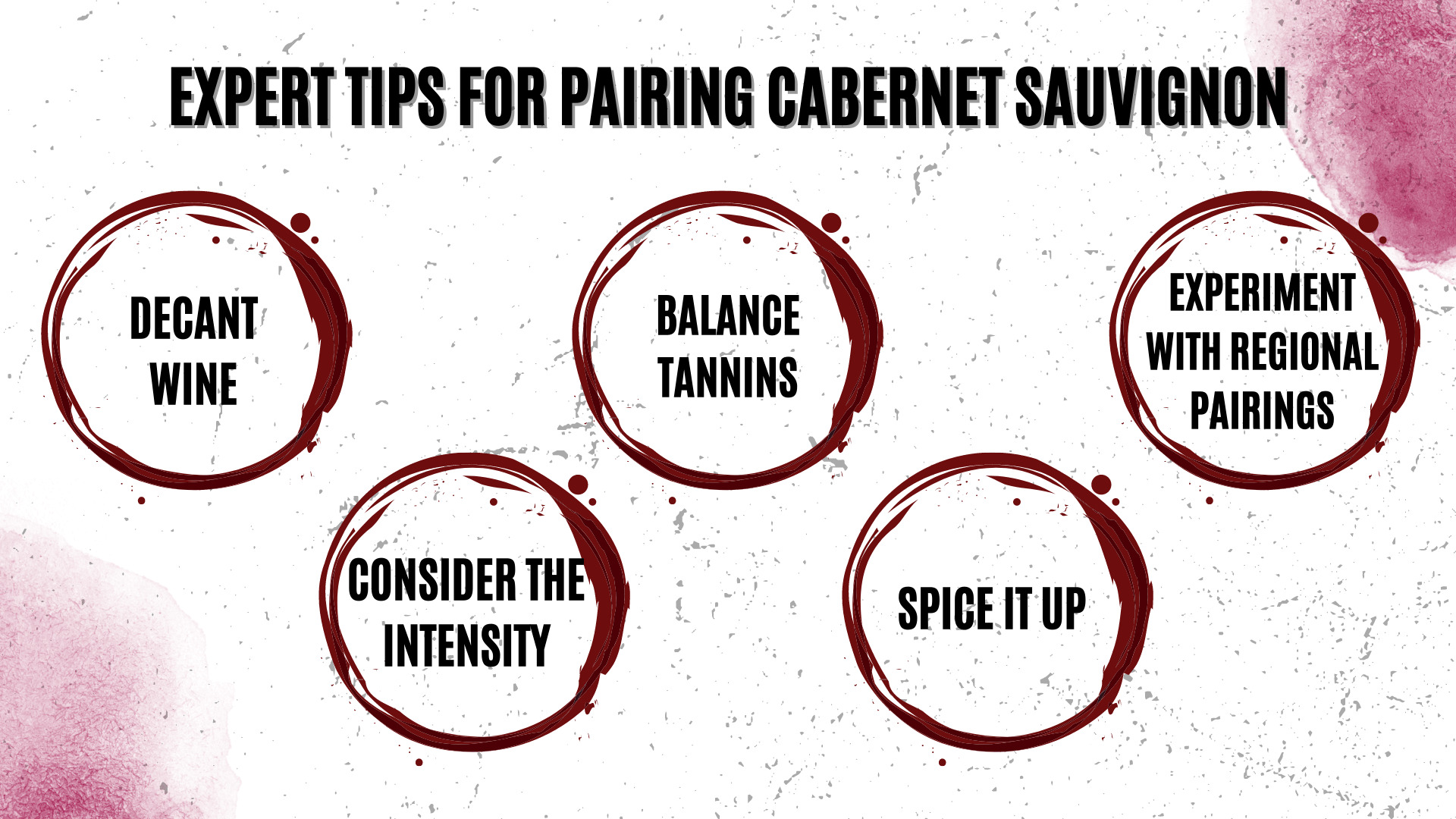Introduction
Cabernet Sauvignon, often referred to as the “king of red wines,” is one of the world’s most popular and widely recognized wine varieties. Originating in Bordeaux, France, Cabernet Sauvignon is now grown in nearly every major wine-producing country. Known for its full-bodied character, firm tannins, and dark fruit flavors, Cabernet Sauvignon is a versatile wine that pairs exceptionally well with a wide range of dishes. In this comprehensive guide, we’ll explore the history, characteristics, and various styles of Cabernet Sauvignon, as well as share expert tips and pairing suggestions for the perfect dining experience.
I. The History of Cabernet Sauvignon
Cabernet Sauvignon was born from a chance crossing of Cabernet Franc and Sauvignon Blanc in the 17th century. This resilient and adaptable grape quickly gained popularity and is now planted in diverse wine regions worldwide, from the famed vineyards of Bordeaux to the sun-soaked valleys of California.
II. Wine Profile
Cabernet Sauvignon is a full-bodied red wine with moderate to high acidity and pronounced tannins. Its flavor profile typically includes black currant, black cherry, and blackberry, with secondary notes of cedar, tobacco, and spice. The wine often undergoes oak aging, which imparts additional flavors of vanilla, chocolate, and toasted oak.
III. Characteristics of Cabernet Sauvignon
Cabernet Sauvignon is known for its deep, inky color and bold, concentrated flavors. Common tasting notes include blackcurrant, black cherry, and blackberry, often accompanied by hints of green bell pepper, cedar, and graphite. The wine’s high tannin content and moderate acidity provide structure and balance, while its full-bodied nature makes it a natural pairing for rich, flavorful dishes.
IV. Old World vs. New World Cabernet Sauvignon
Old World Cabernet Sauvignons, primarily from Bordeaux, tend to be more restrained and earthy, with higher acidity and leaner fruit profiles. New World Cabernet Sauvignons, such as those from California, Australia, and Chile, are often characterized by riper fruit flavors, higher alcohol content, and a more opulent texture.
V. Factors to Consider for Cabernet Sauvignon Food Pairings
- Tannin levels: Cabernet Sauvignon is known for its high tannin content, which can create a drying sensation in the mouth. To counteract this, pair the wine with dishes that have rich, fatty components, like marbled meats, creamy sauces, or dishes with butter.
- Acidity: Acidity in wine can help to balance the flavors of a dish and cleanse the palate. Cabernet Sauvignon typically has medium acidity, making it suitable for pairing with a variety of foods, particularly those with some acidity of their own, like tomato-based dishes.
- Fruit profile: The fruit flavors in Cabernet Sauvignon can range from red fruits like cherries and raspberries to darker fruits like blackcurrants and blackberries. Consider the wine’s fruit profile when selecting a dish, opting for complementary flavors or contrasts that will enhance the pairing.
- Oak influence: Many Cabernet Sauvignons are aged in oak barrels, which can impart flavors of vanilla, spice, and smoke. Consider dishes that will complement or contrast these flavors, like grilled meats or dishes with earthy or spicy components.
- Body and intensity: Cabernet Sauvignon is typically a full-bodied and intense wine, which means it can easily overpower delicate dishes. Choose robust, flavorful dishes that can stand up to the wine’s intensity.
- Regional pairings: Pairing a wine with food from the same region can often yield successful results, as the flavors and culinary traditions have evolved together. For example, a Napa Valley Cabernet Sauvignon might pair well with a California-inspired dish, while a Bordeaux Cabernet Sauvignon could complement a traditional French dish.
- Personal preference: Ultimately, the most important factor in any wine pairing is your own taste. Experiment with different combinations and trust your palate to guide you in creating enjoyable Cabernet Sauvignon food pairings.
VI. Classic Cabernet Sauvignon Food Pairings
- Steak: Grilled, seared, or roasted, a juicy steak is a classic pairing for Cabernet Sauvignon. The wine’s tannins help cut through the fat, while its bold flavors complement the meat’s richness.
- Lamb: Another red meat option, lamb works exceptionally well with Cabernet Sauvignon. The gamey, earthy flavors of lamb pair nicely with the wine’s fruit and spice notes.
- Roasted pork: A succulent, slow-roasted pork dish can stand up to the intensity of Cabernet Sauvignon. The wine’s tannins help balance the richness of the meat, while its fruit flavors enhance the dish’s savory elements.
- Rich pasta dishes: Cabernet Sauvignon can pair well with hearty pasta dishes, such as lasagna or spaghetti with meat sauce. The wine’s bold flavor profile complements the rich, tomato-based sauces and the savory, meaty components.
- Hard cheeses: Aged cheeses like cheddar, gouda, or parmesan can be excellent partners for Cabernet Sauvignon. The wine’s tannins can cut through the fat in the cheese, while its robust flavors complement the cheese’s complexity.
VII. Creative Cabernet Sauvignon Food Pairings
- Mushroom dishes: Earthy mushroom dishes, such as a mushroom risotto or stuffed mushrooms, can be a surprising yet delicious match for Cabernet Sauvignon. The wine’s bold flavors can stand up to the earthy, savory notes of the mushrooms.
- Grilled vegetables: Charred, grilled vegetables like eggplant, zucchini, or bell peppers can work well with Cabernet Sauvignon. The wine’s fruit and spice flavors can complement the smoky, caramelized taste of the vegetables.
- Rich seafood: While seafood might not be the first choice for a Cabernet Sauvignon pairing, bold, rich fish dishes like salmon or tuna steaks can be successful matches. The wine’s tannins can counterbalance the fattiness of the fish, while its dark fruit flavors enhance the dish’s umami character.
- Spiced desserts: Pairing Cabernet Sauvignon with desserts can be a bit unconventional, but try it with spiced, fruit-based desserts like a warm apple crumble or a gingerbread cake. The wine’s fruit and spice notes can harmonize with the dessert’s flavors, creating a satisfying and indulgent pairing.
- Gourmet burgers: A well-crafted burger with premium ingredients like blue cheese, caramelized onions, or bacon can be a delightful partner for Cabernet Sauvignon. The wine’s tannins and bold flavors can complement the burger’s richness and elevate the pairing to a whole new level.
VIII. Expert Tips for Pairing Cabernet Sauvignon
- Decant Cabernet Sauvignon to allow the wine to breathe and open up, enhancing its flavors and softening the tannins.
- Consider the intensity: When pairing Cabernet Sauvignon with food, it’s crucial to match the intensity of the wine with the intensity of the dish. Bold, flavorful dishes work best with this full-bodied wine, as they can stand up to its strong flavors without being overwhelmed.
- Balance tannins with fat: Cabernet Sauvignon’s firm tannins can be softened by dishes with high fat content, such as red meat, rich sauces, or creamy cheeses. This helps create a harmonious balance between the wine and the food.
- Spice it up: Cabernet Sauvignon’s dark fruit flavors can complement spicy dishes, such as grilled meats with spicy rubs or sauces. The wine’s bold flavor profile can handle the heat and provide a pleasant counterbalance.
- Experiment with regional pairings: When in doubt, consider pairing Cabernet Sauvignon with dishes from regions where the wine is produced, such as California, Bordeaux, or Chile. Regional pairings often share complementary flavors and can lead to successful matches.
Conclusion
Cabernet Sauvignon’s bold flavors, full body, and firm tannins make it a versatile wine for food pairings. From classic red meat dishes to more adventurous pairings with spicy foods and rich desserts, the possibilities are nearly endless. By understanding the characteristics and styles of Cabernet Sauvignon, as well as following expert tips, you can elevate your dining experience and create unforgettable pairings that showcase this remarkable wine.
Frequently Asked Questions
While Cabernet Sauvignon is generally considered a full-bodied wine, there is some variation depending on factors such as region, climate, and winemaking techniques. However, most Cabernet Sauvignons will have a full-bodied character
Although Cabernet Sauvignon is not a traditional pairing for seafood, there are exceptions. For example, a rich, buttery salmon dish or a hearty seafood stew may hold up well against the bold flavors of Cabernet Sauvignon.
Cabernet Sauvignon is best enjoyed at a slightly cooler temperature than room temperature, typically around 60-65°F (16-18°C). This allows the wine’s flavors and aromas to shine without being overwhelmed by the alcohol content.
Once opened, a bottle of Cabernet Sauvignon can be stored for up to 3-5 days if properly resealed and kept in a cool, dark place. Using a vacuum-sealed wine preservation system can extend the wine’s life by a few more days.




